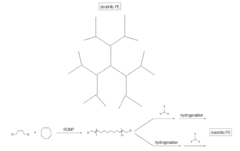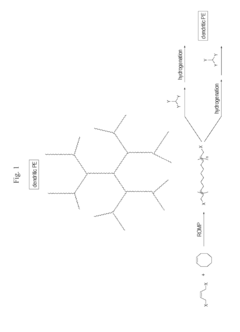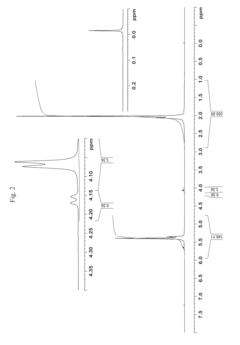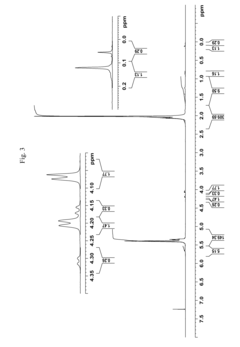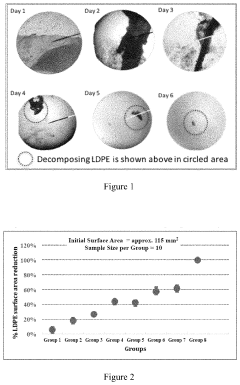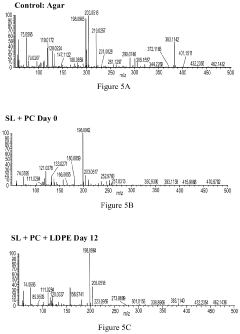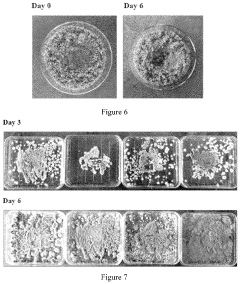How to Lead the Charge for Sustainable LDPE Development?
JUN 30, 20259 MIN READ
Generate Your Research Report Instantly with AI Agent
Patsnap Eureka helps you evaluate technical feasibility & market potential.
LDPE Sustainability Background and Objectives
Low-density polyethylene (LDPE) has been a cornerstone of the plastics industry since its discovery in 1933. Its versatility, durability, and cost-effectiveness have made it a popular choice for various applications, from packaging to construction. However, the increasing global focus on sustainability and environmental concerns has placed LDPE under scrutiny, necessitating a shift towards more sustainable development practices.
The primary objective of sustainable LDPE development is to address the environmental impact of its production, use, and disposal while maintaining its beneficial properties. This involves reducing carbon emissions during manufacturing, improving recyclability, and exploring bio-based alternatives. The challenge lies in balancing these sustainability goals with the material's performance and economic viability.
Recent years have seen a growing awareness of plastic pollution, particularly in marine environments. This has led to increased pressure from consumers, governments, and environmental organizations for more sustainable plastic solutions. The LDPE industry must respond to these demands by innovating and adapting its practices to align with circular economy principles.
Technological advancements play a crucial role in driving sustainable LDPE development. Improved production processes aim to reduce energy consumption and minimize waste. Additionally, research into chemical recycling methods offers promising avenues for more efficient LDPE recycling, potentially closing the loop in the material's lifecycle.
The development of bio-based LDPE alternatives represents another significant trend in the industry. These materials, derived from renewable resources, offer the potential to reduce reliance on fossil fuels and decrease the carbon footprint of LDPE production. However, challenges remain in scaling up production and ensuring that these alternatives match the performance characteristics of traditional LDPE.
Policy and regulatory frameworks are evolving to support sustainable LDPE development. Many countries have implemented or are considering measures such as plastic taxes, extended producer responsibility schemes, and recycling targets. These initiatives create both challenges and opportunities for the LDPE industry, driving innovation and investment in sustainable solutions.
As the LDPE industry moves forward, collaboration between stakeholders will be essential. This includes partnerships between manufacturers, recyclers, researchers, and policymakers to develop holistic approaches to sustainability. Such collaborations can accelerate the development of new technologies, improve recycling infrastructure, and create more effective circular economy models for LDPE.
The primary objective of sustainable LDPE development is to address the environmental impact of its production, use, and disposal while maintaining its beneficial properties. This involves reducing carbon emissions during manufacturing, improving recyclability, and exploring bio-based alternatives. The challenge lies in balancing these sustainability goals with the material's performance and economic viability.
Recent years have seen a growing awareness of plastic pollution, particularly in marine environments. This has led to increased pressure from consumers, governments, and environmental organizations for more sustainable plastic solutions. The LDPE industry must respond to these demands by innovating and adapting its practices to align with circular economy principles.
Technological advancements play a crucial role in driving sustainable LDPE development. Improved production processes aim to reduce energy consumption and minimize waste. Additionally, research into chemical recycling methods offers promising avenues for more efficient LDPE recycling, potentially closing the loop in the material's lifecycle.
The development of bio-based LDPE alternatives represents another significant trend in the industry. These materials, derived from renewable resources, offer the potential to reduce reliance on fossil fuels and decrease the carbon footprint of LDPE production. However, challenges remain in scaling up production and ensuring that these alternatives match the performance characteristics of traditional LDPE.
Policy and regulatory frameworks are evolving to support sustainable LDPE development. Many countries have implemented or are considering measures such as plastic taxes, extended producer responsibility schemes, and recycling targets. These initiatives create both challenges and opportunities for the LDPE industry, driving innovation and investment in sustainable solutions.
As the LDPE industry moves forward, collaboration between stakeholders will be essential. This includes partnerships between manufacturers, recyclers, researchers, and policymakers to develop holistic approaches to sustainability. Such collaborations can accelerate the development of new technologies, improve recycling infrastructure, and create more effective circular economy models for LDPE.
Market Demand for Sustainable LDPE
The market demand for sustainable Low-Density Polyethylene (LDPE) has been steadily increasing in recent years, driven by growing environmental concerns and stricter regulations on plastic waste. LDPE, a versatile polymer widely used in packaging, construction, and consumer goods, has traditionally been produced from fossil fuel-based feedstocks. However, the shift towards sustainability has created a significant opportunity for eco-friendly alternatives.
Consumer awareness and preference for environmentally responsible products have become key drivers in the sustainable LDPE market. Many end-users, particularly in developed economies, are willing to pay a premium for products that demonstrate reduced environmental impact. This trend has prompted major brands and retailers to commit to using more sustainable packaging materials, including bio-based and recycled LDPE.
The packaging industry, which accounts for a substantial portion of LDPE consumption, has been at the forefront of adopting sustainable alternatives. Food and beverage companies, cosmetics manufacturers, and e-commerce businesses are increasingly seeking LDPE solutions that offer the same performance characteristics as traditional LDPE but with a lower carbon footprint. This demand has spurred innovation in bio-based LDPE production and the development of more efficient recycling technologies.
In the construction sector, there is a growing interest in sustainable LDPE for applications such as vapor barriers, geomembranes, and insulation materials. The push for green building certifications and energy-efficient structures has created a niche market for LDPE products that contribute to sustainability goals while maintaining the required performance standards.
The automotive industry, another significant consumer of LDPE, is also driving demand for sustainable alternatives. As automakers strive to reduce vehicle weight and improve fuel efficiency, they are exploring the use of recycled and bio-based LDPE in various components, from interior trims to under-the-hood applications.
Government policies and regulations have played a crucial role in shaping the market demand for sustainable LDPE. Many countries have implemented or are considering measures to reduce plastic waste, such as bans on single-use plastics, extended producer responsibility schemes, and recycling targets. These regulatory pressures have compelled businesses across various sectors to seek out more sustainable LDPE options.
The global market for sustainable LDPE is expected to experience robust growth in the coming years. Factors such as technological advancements in bio-based production methods, improvements in recycling infrastructure, and the development of circular economy models are likely to further boost demand. Additionally, the ongoing research into enhancing the properties of sustainable LDPE to match or exceed those of conventional LDPE will open up new application areas and market opportunities.
Consumer awareness and preference for environmentally responsible products have become key drivers in the sustainable LDPE market. Many end-users, particularly in developed economies, are willing to pay a premium for products that demonstrate reduced environmental impact. This trend has prompted major brands and retailers to commit to using more sustainable packaging materials, including bio-based and recycled LDPE.
The packaging industry, which accounts for a substantial portion of LDPE consumption, has been at the forefront of adopting sustainable alternatives. Food and beverage companies, cosmetics manufacturers, and e-commerce businesses are increasingly seeking LDPE solutions that offer the same performance characteristics as traditional LDPE but with a lower carbon footprint. This demand has spurred innovation in bio-based LDPE production and the development of more efficient recycling technologies.
In the construction sector, there is a growing interest in sustainable LDPE for applications such as vapor barriers, geomembranes, and insulation materials. The push for green building certifications and energy-efficient structures has created a niche market for LDPE products that contribute to sustainability goals while maintaining the required performance standards.
The automotive industry, another significant consumer of LDPE, is also driving demand for sustainable alternatives. As automakers strive to reduce vehicle weight and improve fuel efficiency, they are exploring the use of recycled and bio-based LDPE in various components, from interior trims to under-the-hood applications.
Government policies and regulations have played a crucial role in shaping the market demand for sustainable LDPE. Many countries have implemented or are considering measures to reduce plastic waste, such as bans on single-use plastics, extended producer responsibility schemes, and recycling targets. These regulatory pressures have compelled businesses across various sectors to seek out more sustainable LDPE options.
The global market for sustainable LDPE is expected to experience robust growth in the coming years. Factors such as technological advancements in bio-based production methods, improvements in recycling infrastructure, and the development of circular economy models are likely to further boost demand. Additionally, the ongoing research into enhancing the properties of sustainable LDPE to match or exceed those of conventional LDPE will open up new application areas and market opportunities.
Current Challenges in LDPE Sustainability
The development of sustainable Low-Density Polyethylene (LDPE) faces several significant challenges that hinder its widespread adoption and implementation. One of the primary obstacles is the high energy consumption associated with traditional LDPE production processes. The current methods require substantial amounts of fossil fuels, contributing to greenhouse gas emissions and environmental degradation. This energy-intensive nature of LDPE manufacturing poses a significant barrier to achieving sustainability goals.
Another critical challenge lies in the sourcing of raw materials for LDPE production. Conventional LDPE relies heavily on non-renewable petroleum-based feedstocks, which are not only finite but also contribute to carbon emissions throughout their lifecycle. The transition to renewable or bio-based feedstocks is complicated by issues of scalability, cost-effectiveness, and performance consistency compared to traditional LDPE.
The recyclability of LDPE products presents a further sustainability challenge. While LDPE is theoretically recyclable, the practical implementation of recycling systems faces numerous obstacles. These include contamination issues, the need for efficient collection and sorting mechanisms, and the degradation of material properties through multiple recycling cycles. The lack of widespread, effective recycling infrastructure for LDPE contributes to its accumulation in landfills and the environment.
Moreover, the durability and persistence of LDPE in the environment pose significant ecological concerns. When improperly disposed of, LDPE products can take hundreds of years to decompose, leading to long-term pollution of ecosystems, particularly marine environments. This persistence challenges the principles of sustainability and circular economy models.
The economic viability of sustainable LDPE alternatives is another hurdle. Many eco-friendly options currently come at a higher cost than conventional LDPE, making it difficult for businesses to justify the transition without clear economic incentives or regulatory pressures. This cost disparity is often due to the nascent state of sustainable technologies and the lack of economies of scale in production.
Lastly, there is a significant challenge in aligning industry standards and regulations with sustainability goals. The absence of unified, global standards for sustainable plastics creates confusion in the market and hinders the development and adoption of truly sustainable LDPE alternatives. Regulatory frameworks often lag behind technological advancements, failing to provide the necessary incentives or mandates for sustainable LDPE development.
Addressing these challenges requires a multifaceted approach involving technological innovation, policy reform, and shifts in consumer behavior. It necessitates collaborative efforts across the value chain, from raw material suppliers to end-users, to create a more sustainable future for LDPE production and use.
Another critical challenge lies in the sourcing of raw materials for LDPE production. Conventional LDPE relies heavily on non-renewable petroleum-based feedstocks, which are not only finite but also contribute to carbon emissions throughout their lifecycle. The transition to renewable or bio-based feedstocks is complicated by issues of scalability, cost-effectiveness, and performance consistency compared to traditional LDPE.
The recyclability of LDPE products presents a further sustainability challenge. While LDPE is theoretically recyclable, the practical implementation of recycling systems faces numerous obstacles. These include contamination issues, the need for efficient collection and sorting mechanisms, and the degradation of material properties through multiple recycling cycles. The lack of widespread, effective recycling infrastructure for LDPE contributes to its accumulation in landfills and the environment.
Moreover, the durability and persistence of LDPE in the environment pose significant ecological concerns. When improperly disposed of, LDPE products can take hundreds of years to decompose, leading to long-term pollution of ecosystems, particularly marine environments. This persistence challenges the principles of sustainability and circular economy models.
The economic viability of sustainable LDPE alternatives is another hurdle. Many eco-friendly options currently come at a higher cost than conventional LDPE, making it difficult for businesses to justify the transition without clear economic incentives or regulatory pressures. This cost disparity is often due to the nascent state of sustainable technologies and the lack of economies of scale in production.
Lastly, there is a significant challenge in aligning industry standards and regulations with sustainability goals. The absence of unified, global standards for sustainable plastics creates confusion in the market and hinders the development and adoption of truly sustainable LDPE alternatives. Regulatory frameworks often lag behind technological advancements, failing to provide the necessary incentives or mandates for sustainable LDPE development.
Addressing these challenges requires a multifaceted approach involving technological innovation, policy reform, and shifts in consumer behavior. It necessitates collaborative efforts across the value chain, from raw material suppliers to end-users, to create a more sustainable future for LDPE production and use.
Existing Sustainable LDPE Solutions
01 Recycling and reuse of LDPE
Developing methods for recycling and reusing LDPE to reduce environmental impact. This includes improving collection systems, enhancing sorting techniques, and developing new recycling processes to convert waste LDPE into valuable products or raw materials for other industries.- Recycling and reuse of LDPE: Developing methods for recycling and reusing LDPE to reduce environmental impact. This includes improving collection systems, enhancing sorting techniques, and developing new recycling processes to convert waste LDPE into valuable products or raw materials for other applications.
- Biodegradable LDPE alternatives: Creating biodegradable alternatives to traditional LDPE using renewable resources or additives that enhance biodegradability. These materials aim to maintain the desirable properties of LDPE while reducing its environmental persistence.
- Improved LDPE production processes: Developing more sustainable production processes for LDPE, including the use of renewable energy sources, catalysts that increase efficiency, and methods to reduce waste and emissions during manufacturing.
- LDPE composites and blends: Creating composites or blends of LDPE with other materials to enhance its properties or reduce its environmental impact. This may include incorporating natural fibers, nanoparticles, or other polymers to improve strength, durability, or biodegradability.
- LDPE waste management and circular economy: Implementing comprehensive waste management strategies and circular economy principles for LDPE products. This includes designing products for easier recycling, establishing take-back programs, and creating closed-loop systems to minimize LDPE waste.
02 Biodegradable LDPE alternatives
Creating biodegradable alternatives to traditional LDPE using renewable resources or additives that enhance biodegradability. These materials aim to maintain the desirable properties of LDPE while reducing its environmental persistence.Expand Specific Solutions03 Improved LDPE production processes
Developing more sustainable production processes for LDPE, including energy-efficient methods, use of renewable energy sources, and reduction of waste and emissions during manufacturing. This may involve optimizing catalysts, reactor designs, or implementing new technologies.Expand Specific Solutions04 LDPE composites and blends
Creating composite materials or blends that incorporate LDPE with other sustainable materials to enhance overall environmental performance. This may include combining LDPE with natural fibers, biodegradable polymers, or other eco-friendly additives to improve sustainability while maintaining desired properties.Expand Specific Solutions05 LDPE waste management and circular economy
Implementing comprehensive waste management strategies and circular economy principles for LDPE products. This includes designing products for easier recycling, establishing take-back programs, and developing innovative applications for recycled LDPE to close the loop in its lifecycle.Expand Specific Solutions
Key Players in Sustainable LDPE Development
The sustainable LDPE development landscape is characterized by intense competition among major players in a mature market. The industry is in a transitional phase, moving towards more environmentally friendly practices. The global LDPE market size is substantial, with steady growth projected. Technologically, companies like Dow Global Technologies, ExxonMobil, and SABIC are at the forefront, investing heavily in R&D for sustainable solutions. Chinese firms such as PetroChina and Sinopec are also making significant strides. Academic institutions like Zhejiang University and the Chinese Academy of Sciences are contributing valuable research, fostering industry-academia collaborations to drive innovation in sustainable LDPE production methods.
Dow Global Technologies LLC
Technical Solution: Dow is leading sustainable LDPE development through innovative approaches. They have developed a proprietary technology called AGILITY™ CE, which enables the production of LDPE with up to 70% recycled content[1]. This process incorporates advanced recycling techniques to break down plastic waste into its molecular components, which are then used as feedstock for new LDPE production. Additionally, Dow has invested in bio-based feedstocks, utilizing plant-based materials to create renewable LDPE[2]. Their ELITE™ Enhanced Polyethylene Resins offer improved strength and processability, allowing for downgauging and reduced material usage in packaging applications[3]. Dow is also actively working on improving the recyclability of LDPE products through design for recycling principles and collaborations with the value chain.
Strengths: Strong R&D capabilities, established market presence, and a diverse product portfolio. Weaknesses: High capital investment required for new technologies and potential challenges in scaling up sustainable solutions.
LG Chem Ltd.
Technical Solution: LG Chem is advancing sustainable LDPE development through various initiatives. They have developed a proprietary technology for producing bio-based LDPE using biomass-derived ethylene, reducing reliance on fossil feedstocks[11]. The company is also investing in chemical recycling technologies to convert plastic waste into raw materials for new LDPE production. LG Chem's advanced catalyst systems for LDPE production offer improved energy efficiency and reduced emissions. They are focusing on developing LDPE grades with enhanced mechanical properties, allowing for downgauging in packaging applications and overall material reduction[12]. Additionally, LG Chem is collaborating with industry partners to improve the collection and recycling of LDPE products, particularly in the packaging sector.
Strengths: Strong technological capabilities, diversified business portfolio, and growing presence in sustainable materials. Weaknesses: Relatively smaller scale in LDPE production compared to some competitors and potential challenges in rapidly scaling up new technologies.
Innovative Approaches in LDPE Sustainability
Process for making dendritic polyolefins from telechelic polycyclic olefins
PatentInactiveUS20130172493A1
Innovation
- The synthesis of dendritic polyethylenes through ring opening metathesis polymerization of cyclic olefins with bi-functional alkene chain terminating agents, followed by reaction with multifunctional coupling agents, to produce telechelic hydrocarbon polymers that are then reacted with trifunctional or tetrafunctional coupling agents to create dendritic structures, which can be used as additives in conventional polyethylenes.
Methods for degrading low density polyethylene (LDPE) and remediating leachate
PatentActiveUS20200406320A1
Innovation
- Contacting pretreated LDPE with white-rot fungi, such as Phanerochaete chrysosporium, at elevated temperatures and potentially etching the LDPE, within the activated sludge infrastructure of landfills to achieve near 100% degradation and leachate remediation without toxic byproducts.
Environmental Impact Assessment
The environmental impact assessment of Low-Density Polyethylene (LDPE) development is crucial for sustainable practices in the plastics industry. LDPE production and usage contribute significantly to global plastic pollution and greenhouse gas emissions. The manufacturing process of LDPE is energy-intensive, primarily relying on fossil fuel-derived feedstocks, which results in substantial carbon dioxide emissions. Additionally, the persistence of LDPE in the environment poses severe threats to ecosystems, particularly marine life.
Waste management of LDPE products presents a significant challenge. While LDPE is theoretically recyclable, the recycling rates remain low due to contamination issues and the lack of efficient collection systems. Improper disposal leads to LDPE accumulation in landfills and oceans, contributing to long-term environmental degradation. Microplastic pollution, resulting from the breakdown of LDPE products, has become a growing concern, with potential impacts on food chains and human health.
The production of LDPE also involves the use of various chemicals and additives, some of which may have adverse effects on the environment. Emissions from manufacturing facilities can contribute to air and water pollution, affecting local ecosystems and communities. Furthermore, the transportation of raw materials and finished LDPE products adds to the overall carbon footprint of the industry.
However, recent advancements in sustainable LDPE development show promise in mitigating these environmental impacts. Bio-based LDPE, derived from renewable resources such as sugarcane or corn, offers a potential alternative to traditional petroleum-based LDPE. This approach can significantly reduce greenhouse gas emissions associated with production. Additionally, improvements in recycling technologies and the development of more easily recyclable LDPE formulations are enhancing the circularity of LDPE products.
Efforts to reduce the environmental footprint of LDPE also include the optimization of production processes to improve energy efficiency and reduce waste. The implementation of closed-loop systems and the use of renewable energy sources in manufacturing facilities are contributing to a decrease in the overall environmental impact of LDPE production.
In conclusion, while the current environmental impact of LDPE is substantial, ongoing research and development in sustainable practices are paving the way for more environmentally friendly LDPE production and usage. The transition towards a circular economy model for LDPE, coupled with advancements in bio-based alternatives and improved recycling technologies, holds the potential to significantly reduce the environmental burden of this widely used plastic material.
Waste management of LDPE products presents a significant challenge. While LDPE is theoretically recyclable, the recycling rates remain low due to contamination issues and the lack of efficient collection systems. Improper disposal leads to LDPE accumulation in landfills and oceans, contributing to long-term environmental degradation. Microplastic pollution, resulting from the breakdown of LDPE products, has become a growing concern, with potential impacts on food chains and human health.
The production of LDPE also involves the use of various chemicals and additives, some of which may have adverse effects on the environment. Emissions from manufacturing facilities can contribute to air and water pollution, affecting local ecosystems and communities. Furthermore, the transportation of raw materials and finished LDPE products adds to the overall carbon footprint of the industry.
However, recent advancements in sustainable LDPE development show promise in mitigating these environmental impacts. Bio-based LDPE, derived from renewable resources such as sugarcane or corn, offers a potential alternative to traditional petroleum-based LDPE. This approach can significantly reduce greenhouse gas emissions associated with production. Additionally, improvements in recycling technologies and the development of more easily recyclable LDPE formulations are enhancing the circularity of LDPE products.
Efforts to reduce the environmental footprint of LDPE also include the optimization of production processes to improve energy efficiency and reduce waste. The implementation of closed-loop systems and the use of renewable energy sources in manufacturing facilities are contributing to a decrease in the overall environmental impact of LDPE production.
In conclusion, while the current environmental impact of LDPE is substantial, ongoing research and development in sustainable practices are paving the way for more environmentally friendly LDPE production and usage. The transition towards a circular economy model for LDPE, coupled with advancements in bio-based alternatives and improved recycling technologies, holds the potential to significantly reduce the environmental burden of this widely used plastic material.
Circular Economy Integration
Integrating circular economy principles into LDPE development is crucial for achieving sustainability in the plastics industry. This approach focuses on minimizing waste, maximizing resource efficiency, and extending the lifecycle of LDPE products. One key strategy is the implementation of advanced recycling technologies, such as chemical recycling, which can break down LDPE into its molecular components for reuse in new products. This process helps close the loop in the LDPE lifecycle and reduces the demand for virgin materials.
Another important aspect of circular economy integration is the design for recyclability. This involves creating LDPE products that are easier to collect, sort, and recycle at the end of their life. Manufacturers can achieve this by using mono-material designs, avoiding problematic additives, and incorporating easily separable components. Such design considerations not only improve recycling rates but also enhance the quality of recycled LDPE.
Collaboration across the value chain is essential for successful circular economy integration. This includes partnerships between LDPE producers, product manufacturers, waste management companies, and recyclers. By working together, these stakeholders can develop more efficient collection systems, improve sorting technologies, and create markets for recycled LDPE. Additionally, establishing take-back programs and deposit schemes can incentivize consumers to return LDPE products, ensuring a steady supply of recyclable materials.
The development of bio-based LDPE alternatives is another avenue for circular economy integration. These materials, derived from renewable resources such as sugarcane or corn, can be designed to be biodegradable or compostable under specific conditions. While not a complete solution, bio-based LDPE can complement recycling efforts and reduce reliance on fossil-based feedstocks.
Implementing digital technologies and data analytics can further enhance circular economy efforts in LDPE development. Blockchain and IoT solutions can improve traceability throughout the LDPE lifecycle, enabling better management of material flows and facilitating more efficient recycling processes. Advanced data analytics can also help optimize production processes, reduce waste, and identify new opportunities for material recovery and reuse.
Lastly, policy support and regulatory frameworks play a crucial role in driving circular economy integration for LDPE. Measures such as extended producer responsibility, recycled content mandates, and landfill bans can create the necessary incentives for industry-wide adoption of circular practices. These policies, combined with public awareness campaigns and education initiatives, can help shift consumer behavior and create a more supportive environment for sustainable LDPE development.
Another important aspect of circular economy integration is the design for recyclability. This involves creating LDPE products that are easier to collect, sort, and recycle at the end of their life. Manufacturers can achieve this by using mono-material designs, avoiding problematic additives, and incorporating easily separable components. Such design considerations not only improve recycling rates but also enhance the quality of recycled LDPE.
Collaboration across the value chain is essential for successful circular economy integration. This includes partnerships between LDPE producers, product manufacturers, waste management companies, and recyclers. By working together, these stakeholders can develop more efficient collection systems, improve sorting technologies, and create markets for recycled LDPE. Additionally, establishing take-back programs and deposit schemes can incentivize consumers to return LDPE products, ensuring a steady supply of recyclable materials.
The development of bio-based LDPE alternatives is another avenue for circular economy integration. These materials, derived from renewable resources such as sugarcane or corn, can be designed to be biodegradable or compostable under specific conditions. While not a complete solution, bio-based LDPE can complement recycling efforts and reduce reliance on fossil-based feedstocks.
Implementing digital technologies and data analytics can further enhance circular economy efforts in LDPE development. Blockchain and IoT solutions can improve traceability throughout the LDPE lifecycle, enabling better management of material flows and facilitating more efficient recycling processes. Advanced data analytics can also help optimize production processes, reduce waste, and identify new opportunities for material recovery and reuse.
Lastly, policy support and regulatory frameworks play a crucial role in driving circular economy integration for LDPE. Measures such as extended producer responsibility, recycled content mandates, and landfill bans can create the necessary incentives for industry-wide adoption of circular practices. These policies, combined with public awareness campaigns and education initiatives, can help shift consumer behavior and create a more supportive environment for sustainable LDPE development.
Unlock deeper insights with Patsnap Eureka Quick Research — get a full tech report to explore trends and direct your research. Try now!
Generate Your Research Report Instantly with AI Agent
Supercharge your innovation with Patsnap Eureka AI Agent Platform!
